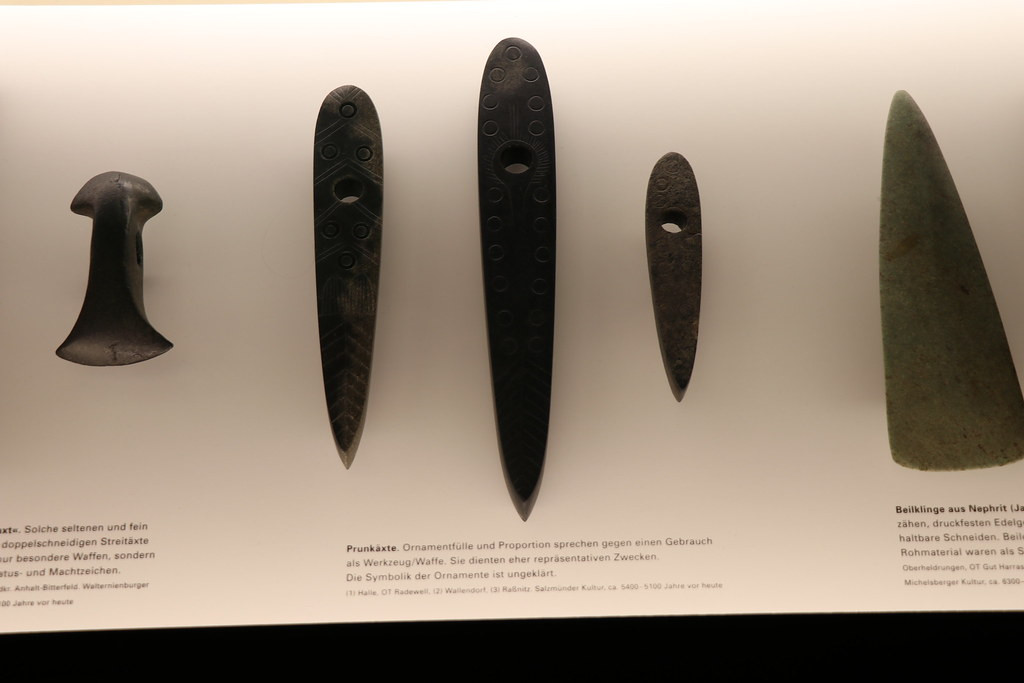Unearthing the Past: Central Germany’s Decorated Neolithic Axes
In the rolling hills of Central Germany, archaeologists have uncovered a treasure trove of Neolithic artifacts that offer a fascinating glimpse into the lives of our ancestors. Among these discoveries, a collection of ornately decorated axes stands out, telling a story of craftsmanship, symbolism, and cultural identity that spans millennia.

The Salzmünder’s Stone Canvas
Between 3400 and 3100 BC, the Salzmünder culture flourished in what is now Central Germany. These ancient people left behind a legacy etched in stone – axes adorned with intricate designs that blur the line between tool and art.
From Halle-Radewell to Wallendorf: A Journey Through Time
The Masterpiece of Halle-Radewell
At the heart of this collection lies the Halle-Radewell ax, a true masterpiece of Neolithic craftsmanship. Its surface tells a story in symbols – a stalked eyelet encircled by a halo, mysterious circles, and feather-like patterns that dance across the stone. This wasn’t just a tool for felling trees; it was a statement of power, status, and perhaps even a connection to the spiritual realm.
The Geometric Poetry of Raßnitz and Wallendorf
While not as elaborate as their Halle-Radewell cousin, the axes found in Raßnitz and Wallendorf speak volumes through their geometric designs. These carefully carved patterns may have served as signatures of their creators or as symbols understood by the entire community.
More Than Just Tools: The Cultural Significance of Decorated Axes
Symbols of Authority and Tradition

These axes were more than mere implements. They were likely symbols of authority, showcasing the skill of their creators and the status of their owners. The consistent use of certain motifs across different sites suggests a shared visual language, reinforcing the cultural identity of the Salzmünder people.
A Bridge Between the Practical and the Ceremonial
While some axes may have been used for everyday tasks, others were likely reserved for ceremonial purposes. This duality reflects the complex relationship our ancestors had with their tools, imbuing even the most practical objects with deep cultural significance.
Preserving the Legacy: What These Axes Tell Us Today
As we marvel at these ancient artifacts, we’re reminded of the enduring human desire to create beauty and meaning in everyday objects. The decorated axes of Central Germany’s Neolithic period serve as a tangible link to our past, offering insights into the lives, beliefs, and artistic expressions of a people separated from us by thousands of years.
These stone canvases, with their intricate designs and careful craftsmanship, continue to speak to us across the ages. They stand as a testament to the sophistication of Neolithic societies and remind us that the impulse to create art is as old as humanity itself.

